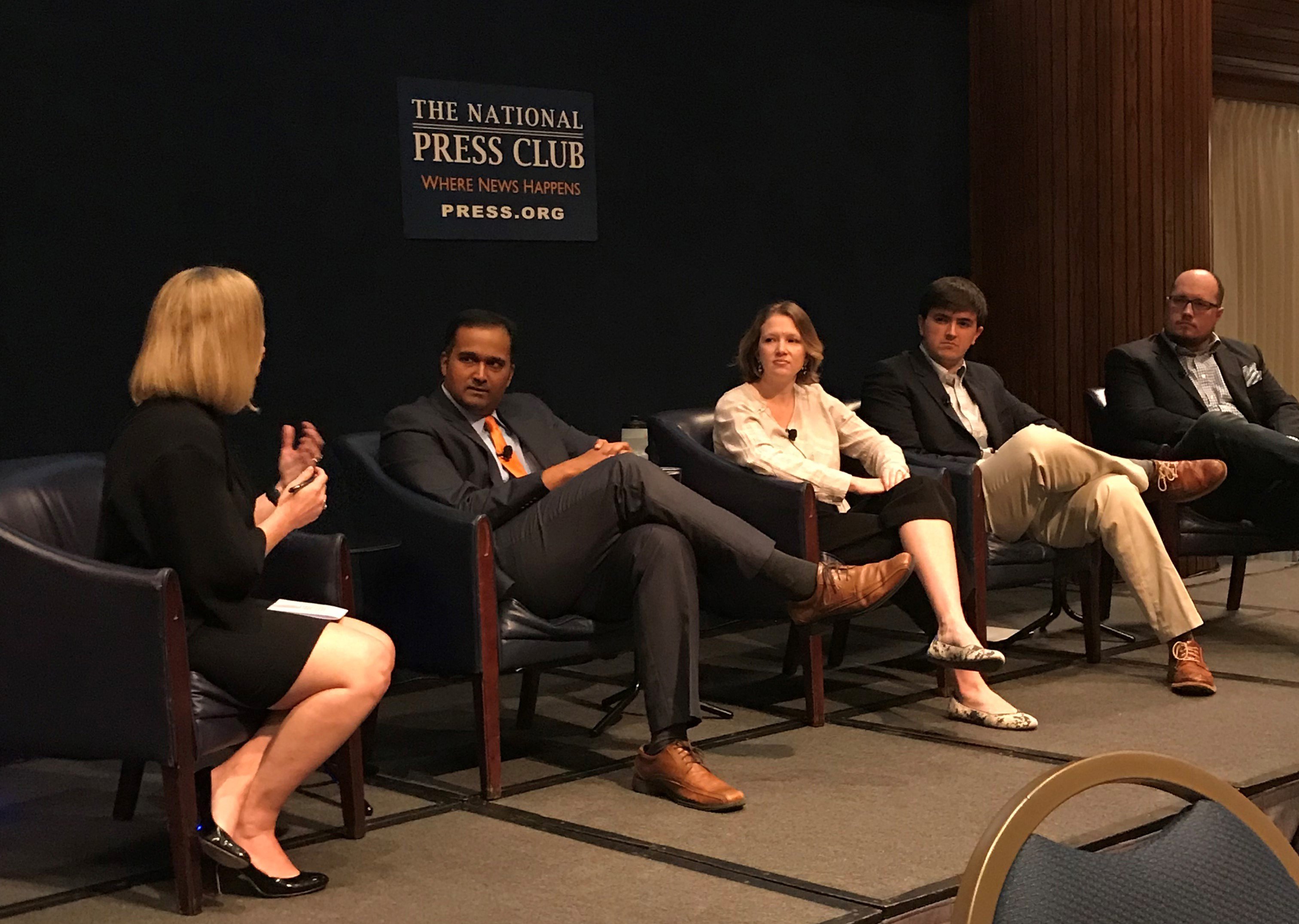In an era where unique and genuine storytelling is valued more than ever, can technology really help communicators create engaging content in a more sustainable, reliable and authentic way?
On Wednesday, October 31, the National Press Club (NPC) hosted its annual Communicators’ Summit, which explored how new technologies are assisting journalists and communicators to deliver compelling stories and reach intergenerational audiences.
Legacy and Innovation: A Balancing Act
Francesco Marconi, R&D Chief, The Wall Street Journal, discussed how artificial intelligence (AI) impacts writing and news consumption and enables journalists and communicators to focus on what they do best: being great storytellers.
- AI complements without replacing: People and relationships are the dominant forces within our industry, but the goal of AI is to reduce repetitive tasks so that journalists are not tied down with grunt work.
- AI generates outputs: For example, the Associated Press and The Wall Street Journal use AI to put together financial and sports stories from raw data, essentially turning this data into original stories.
- AI digs out media insights: As big data fuels AI, research can be conducted faster and information correlated quickly and efficiently, allowing communicators to create well-informed stories in real-time.
- AI promotes transparency in reporting: AI makes fact checking quicker and more reliable for journalists. However, they still need to rely on their editorial judgement to discern what’s real and what’s fake. For example, “deepfakes” (a type of fake video constructed by AI algorithms) can impact the perception of truth and reality. “Deepfakes” not only manipulate our own visual and audio consumption but pose major challenges for newsrooms when it comes to verification as well.
- Journalists and communicators are still the primary information officers: AI should be considered a point of reference, Marconi advised. The abundance of technology nowadays, should not replace going back to the roots of communication for unique and well-balanced storytelling.
The Age of Sensory Communication has Arrived
The first panel session, which covered intergenerational communication and how to reach specific audiences, included Shira Harrington (CEO of Purposeful Hire, Inc.), Brig. Gen. Omar Jones (Chief of Public Affairs Officer for the U.S. Army), Matt Bennett (EVP of Corporate Communications for the Motion Picture Association of America), and Lauren Levinson (SVP at Brodeur Partners).
The panel spoke about a distinct need to understand Millennials (GEN-Y), and post-Millennials (GEN-Z). These generations are more egalitarian, more informal and more accelerated than the older generations, the panel agreed. The challenge therein is not about the good story to tell, but – and it all comes back to the backbone of marketing – knowing how to tell the story to your target audience.
For instance, Brig. Gen. Jones mentioned that the U.S. Army is undergoing a cultural shift with its approach to recruitment and training younger soldiers. Before, the armed forces expected immediate loyalty of their newest recruits; now they realize they must earn it. Jones mentioned that he interacts with younger soldiers far more than his predecessors did.
Back to the Basics
Journalists and editors comprised the second panel, which focused the conversation on how media organizations repurpose content and ways communicators could make journalists’ jobs easier. We heard from Mary Nahorniak (Deputy Managing Editor of Digital at USA Today), Sudeep Reddy (Managing Editor at Politico), Justin Green (Deputy Managing Editor at Axios), and Derek Wallbank (Team Leader for Bloomberg First Word).

“Check what reporters are tweeting and posting on social media, follow their discussions, who are they following. These are key to deliver concise content and stay relevant to the story,” Reddy said. He also added that is the only way to integrate real human voices and relevant players into the conversation.
The Consequences of Fake News
Frank Sesno, former CNN correspondent and director of the School of Media and Public Affairs at The George Washington University, discussed why the public needs to ask the right questions and validate information.
“With the current epidemic of misinformation, transparency is more important now than ever,” Sesno said. He discussed that as news consumers, we need to build critical thinking into our education – we should know where and how to look for opposing viewpoints.
Sesno also talked about the power of honesty – for both journalists and communicators. He reiterated the need to admit to our errors when they happen and identify our sources. The bottom line, Sesno concluded, is that we must always “engage, be humble and be transparent.”
Danny Selnick, Business Wire’s former Senior Vice President of Strategic Markets and chair of NPC’s Communicator Team committee, helped organize this informative event.





